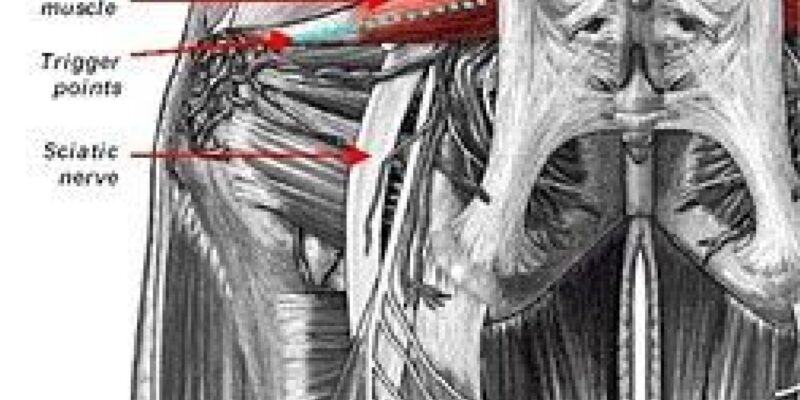Introduction: Piriformis syndrome is a condition that often eludes diagnosis, yet it can cause significant pain and discomfort for those affected. The piriformis flare up, located deep in the buttocks, is responsible for various movements in the hip joint. When this muscle becomes irritated or compressed, it can lead to a condition known as piriformis syndrome. In this article, we will explore the causes, symptoms, diagnosis, and treatment options for this often misunderstood condition.
Causes of Piriformis Syndrome
Piriformis syndrome primarily occurs when the piriformis muscle tightens or spasms, often due to various reasons:
- Overuse or Strain: Engaging in activities that involve repetitive motion of the hip, such as running, bicycling, or sitting for extended periods, can lead to muscle irritation.
- Trauma: A direct injury to the buttocks, such as a fall, can trigger piriformis syndrome.
- Anatomical Variations: Some individuals have a piriformis muscle that runs in a way that increases the risk of irritation.
- Muscle Imbalances: Weak or tight hip muscles can disrupt the balance of the pelvis and increase the risk of piriformis syndrome.
Symptoms of Piriformis Syndrome
The symptoms of piriformis syndrome can be similar to other conditions, which often leads to misdiagnosis. Common symptoms include:
- Pain: Typically, pain begins in the buttocks and can radiate down the back of the thigh. The pain can be sharp and may intensify during activities like sitting, walking, or climbing stairs.
- Numbness and Tingling: Some individuals experience numbness and tingling in the affected leg, which can be mistaken for sciatica.
- Muscle Weakness: Weakness in the affected leg can occur due to reduced blood flow and nerve function in the area.
Diagnosing Piriformis Syndrome
Diagnosing piriformis syndrome can be challenging, as the symptoms often mimic other conditions, such as sciatica or lumbar disc herniation. Healthcare professionals typically use a combination of methods to reach a diagnosis:
- Clinical Examination: A thorough physical examination is conducted to assess the range of motion and identify tender points in the hip and buttocks.
- Imaging: X-rays, MRI, and CT scans can help rule out other causes of pain and may show muscle abnormalities.
- Electromyography (EMG): This test measures the electrical activity of muscles and nerves, helping identify muscle and nerve-related problems.
Treatment Options for Piriformis Syndrome
Treatment for piriformis syndrome can vary depending on the severity of the condition. Common treatment approaches include:
- Rest and Activity Modification: Reducing or modifying activities that exacerbate symptoms can provide relief. Avoiding sitting for prolonged periods and incorporating gentle stretches can help.
- Physical Therapy: Physical therapists can develop a personalized exercise program to strengthen the hip muscles and improve flexibility.
- Medications: Over-the-counter pain relievers, muscle relaxants, or injections of corticosteroids into the affected area may be recommended to alleviate pain and inflammation.
- Heat and Ice: Applying heat or ice to the affected area can help reduce pain and muscle spasms.
- Massage and Manual Therapy: Techniques such as deep tissue massage or myofascial release can help relax the piriformis muscle and alleviate symptoms.
- Invasive Procedures: In severe cases, when conservative treatments fail, minimally invasive procedures or surgery to release the piriformis flare up may be considered.
Preventing Piriformis Syndrome
While piriformis syndrome can be challenging to prevent, there are some strategies that may reduce the risk of developing the condition:
- Regular Exercise: Engage in a well-rounded exercise routine that includes stretching and strengthening exercises for the hip muscles.
- Proper Posture: Maintain good posture, especially when sitting for extended periods, to minimize pressure on the piriformis muscle.
- Adequate Warm-Up: Always warm up before engaging in physical activities to prepare your muscles for exercise.
- Balanced Activity: Avoid overuse of the hip muscles by varying your physical activities.
Conclusion
Piriformis syndrome is a painful condition that can affect anyone, often masquerading as other common musculoskeletal problems. By understanding its causes, recognizing its symptoms, and seeking appropriate diagnosis and treatment, individuals suffering from piriformis flare up can find relief and regain their quality of life. It is essential to consult with a healthcare professional for a proper evaluation and treatment plan tailored to one’s specific needs.

